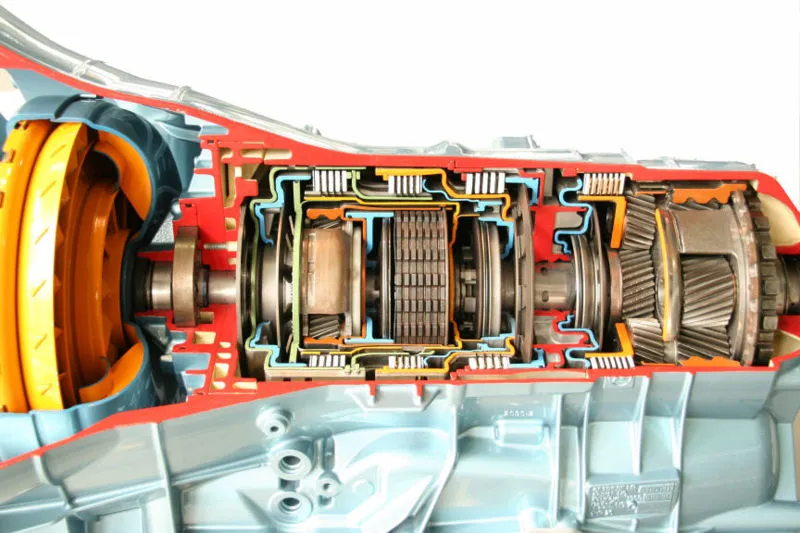Introduction
If you’re dealing with transmission issues in a vehicle with a ZF 6HP Generation 2 transmission, understanding the solenoid diagram PDF can be incredibly helpful. This guide will walk you through what the solenoid diagram shows, how each component functions, and provide a step-by-step repair guide. Whether you’re a car enthusiast or a DIY mechanic, this article will help you navigate and use the solenoid diagram effectively.
What Is the ZF 6HP Generation 2 Solenoid Diagram PDF?

The ZF 6HP Generation 2 solenoid diagram PDF is a technical document that provides a detailed map of the solenoids in the ZF 6HP19 and ZF 6HP21 transmissions. It shows the layout, functions, and electrical connections of the solenoids, which are crucial for the transmission’s operation.
Key Components in the Diagram
- Shift Solenoids: Control gear changes.
- Pressure Control Solenoids: Regulate hydraulic pressure within the transmission.
- Torque Converter Clutch (TCC) Solenoid: Manages the locking and unlocking of the torque converter.
Understanding these components helps diagnose and repair transmission issues more effectively.
How the Solenoid Diagram Helps
The solenoid diagram PDF is an invaluable tool for diagnosing transmission problems. Here’s how it helps:
Identifying Faults
By understanding the diagram, you can pinpoint which solenoids might be malfunctioning.
Improving Repairs
It guides you on where to look and what to check, making repairs more straightforward.
Troubleshooting Common Issues
If you’re experiencing issues with your transmission, such as rough shifting or erratic behavior, the solenoid diagram can assist in diagnosing the problem.
Common Solenoid Issues
- Electrical Failures: Wiring issues or corrosion can lead to erratic shifting.
- Mechanical Failures: Wear and tear inside the solenoid can cause malfunction.
- Blockages: Debris can impact solenoid performance.
Diagnostic Tools and Methods
- Diagnostic Scanner: Use it to retrieve error codes and identify malfunctioning components.
- Visual Inspection: Check solenoid wiring and connectors for damage or loose connections.
Step-by-Step Repair Guide
Replacing a faulty solenoid can seem daunting, but following a clear, step-by-step guide can make it manageable. Here’s how to do it:
1. Safety First
- Prepare Your Vehicle: Ensure the car is on a level surface with the parking brake engaged. Disconnect the battery.
2. Drain Transmission Fluid
- Remove Transmission Pan: Drain the fluid into a container.
3. Remove Transmission Valve Body
- Detach the Valve Body: This will give you access to the solenoids.
4. Identify the Faulty Solenoid
- Use the Diagram: Locate the solenoid that needs replacing.
5. Replace the Solenoid
- Remove and Install: Take out the faulty solenoid and replace it with a new one. Ensure all connections are secure.
6. Reassemble and Refill
- Reattach Components: Put the valve body back in place, replace the transmission pan, and refill the fluid.
7. Test Drive
- Reconnect the Battery: Take the car for a test drive to ensure the transmission is functioning correctly.
Maintenance Tips
To prevent future problems, follow these maintenance tips:
- Regular Inspections: Check solenoids and transmission fluid regularly.
- Prompt Repairs: Address any issues as soon as they arise to avoid further damage.
Additional Resources
For more detailed information, you might want to refer to:
- Service Manuals: Provide comprehensive guides on maintenance and repair.
- Professional Help: If the problem persists, consider consulting a qualified mechanic or transmission specialist.
Conclusion
Understanding the ZF 6HP Generation 2 solenoid diagram PDF can greatly improve your ability to diagnose and repair transmission issues. By familiarizing yourself with the solenoid components, functions, and repair steps, you can tackle problems more confidently. Remember, regular maintenance and prompt attention to issues can help keep your vehicle running smoothly.





















+ There are no comments
Add yours